她乃二十世纪美术史上伟大女画家,近代中国画坛之要津,新时代中国画开拓者,创一代画貌。吴冠中赞曰:“真艺术家,艺品人品皆一流。”此女画家,即周思聪。
She is a great female painter in the art history of the 20th century, a key figure in modern Chinese painting, and a pioneer of contemporary Chinese painting, creating a new style of painting. Wu Guanzhong praised her, saying: "She is a true artist, with top-notch artistry and character." This female painter is Zhou Sicong.

周思聪,己卯年生,少即展非凡天赋。戊戌年入中央美术学院中国画系,受李可染、蒋兆和、叶浅予、刘凌仓、李苦禅、郭味蕖等名师之教。工水墨人物,兼花卉,偶涉山水,造型力强。早期作品具情节,笔墨清新洒脱,极富表现。自庚申年,始探索变革,引西方现代艺术于画中,提炼笔墨,使更精练且有意趣。
Zhou Sicong was born in the Year of the Rabbit. She showed extraordinary artistic talent from a young age. In the Year of the Dog, she entered the Chinese Painting Department of the Central Academy of Fine Arts, studying under masters such as Li Keran, Jiang Zhaohe, Ye Qianyu, Liu Lingcang, Li Kuchan, and Guo Weiqu. She excelled in ink and wash figure painting, as well as flowers, and occasionally dabbled in landscapes. Her early works are characterized by narrative, fresh and unrestrained brushstrokes, and rich expressiveness. From the Year of the Monkey, she began to explore and innovate, incorporating Western modern art forms into her work, refining and strengthening her brushwork to make it more precise and interesting.
周思聪之作,映二十载画家沉思勇进,集中新时期中国画之重要面貌。资质颖异,英才早发,五六十年代即为中央美院附中及中国画系高材。受名师指导,主攻写实,兼涉写意。九载苦学,炼扎实基本功,造型根基坚实,深悟传统笔墨之妙。
Zhou Sicong's works reflect two decades of contemplation and progress by mid-generation painters, concentrating an important aspect of the development of Chinese painting in the new era. With extraordinary talent and early success, she was already an outstanding student at the Central Academy of Fine Arts High School and the Chinese Painting Department in the fifties and sixties. Under the guidance of renowned teachers, she focused on realism while also engaging in freehand brushwork. Through nine years of diligent effort, she honed her solid and comprehensive fundamental skills, establishing a strong foundation in modeling and gaining a deep understanding of the expressive power of traditional brushwork.
其艺途始于山水画,作品卓越,于世界青年联欢节获奖。遵师教,专攻人物画。至七十年代,《人民和总理》《清洁工人的怀念》(与夫卢沉合作)之作,表现时代心声,水墨写实能力卓绝,声名鹊起,成画坛大家。
Her artistic journey began with landscape painting, with outstanding works that won awards at the World Youth Festival. Following her teachers' guidance, she specialized in figure painting. By the seventies, her works such as "The People and the Premier" and "The Cleaner's Remembrance" (co-created with her husband Lu Chen), which expressed the spirit of the times and demonstrated strong ink and wash realism, quickly gained her fame and established her as a master in the art world.

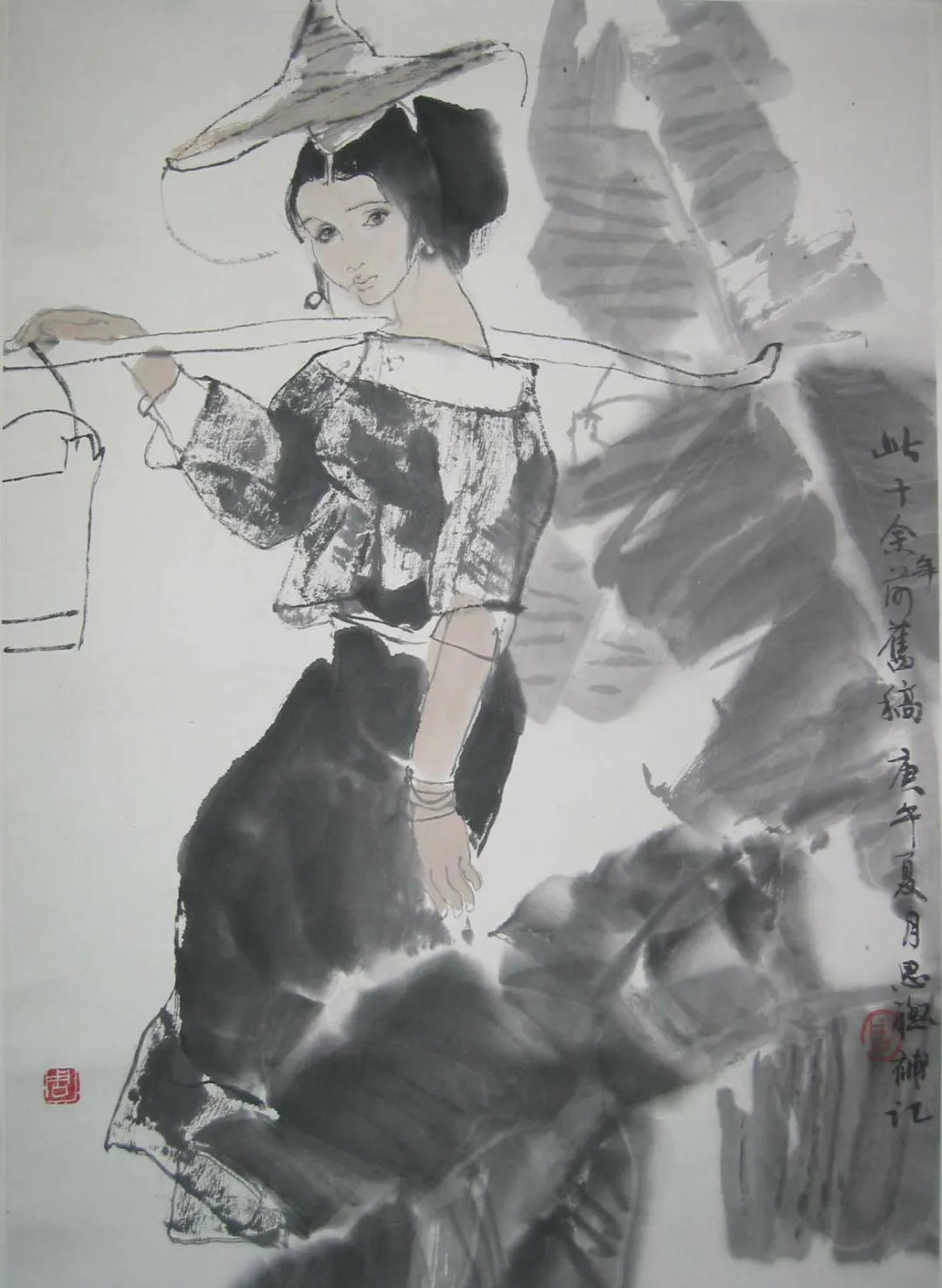
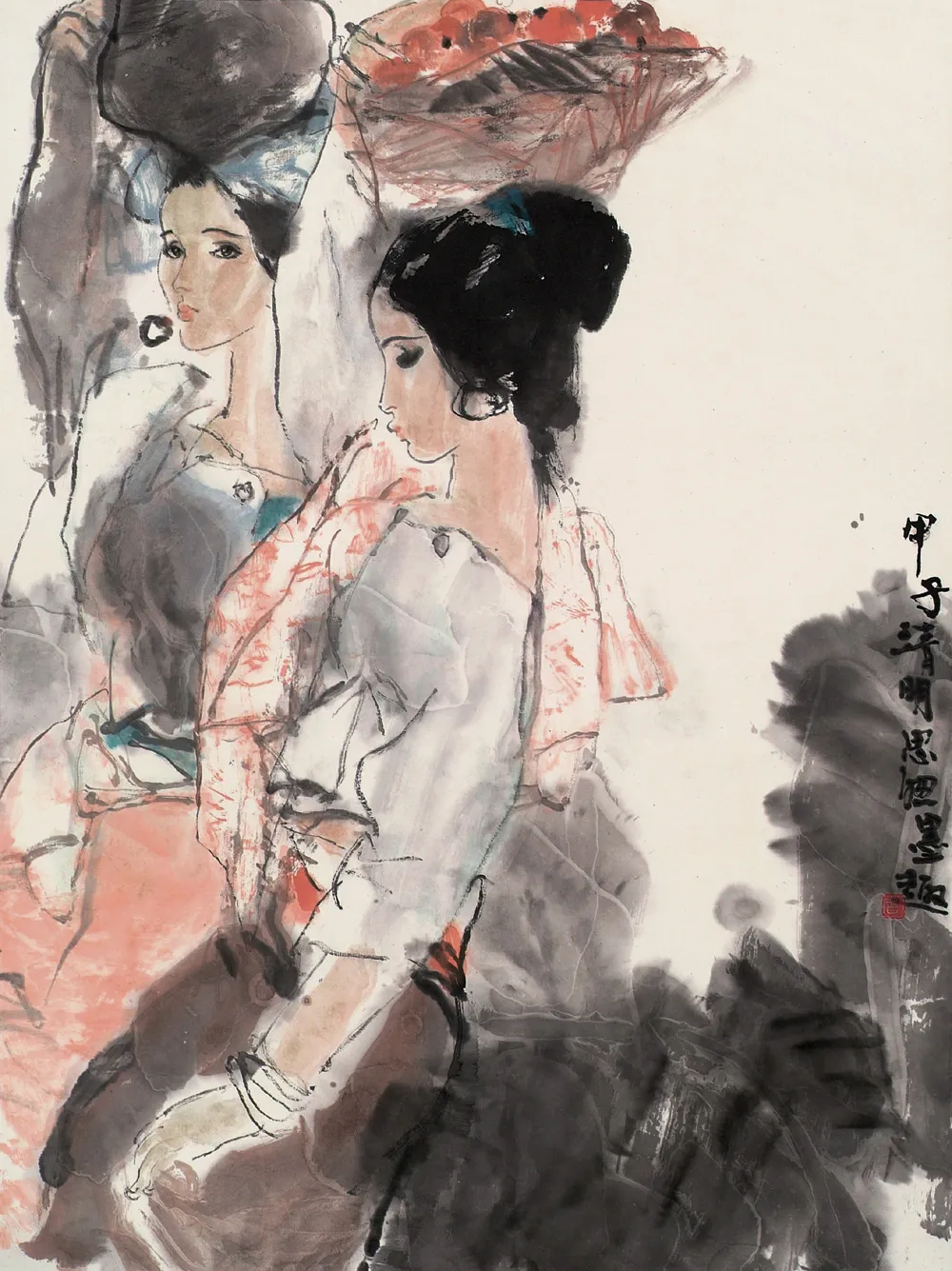

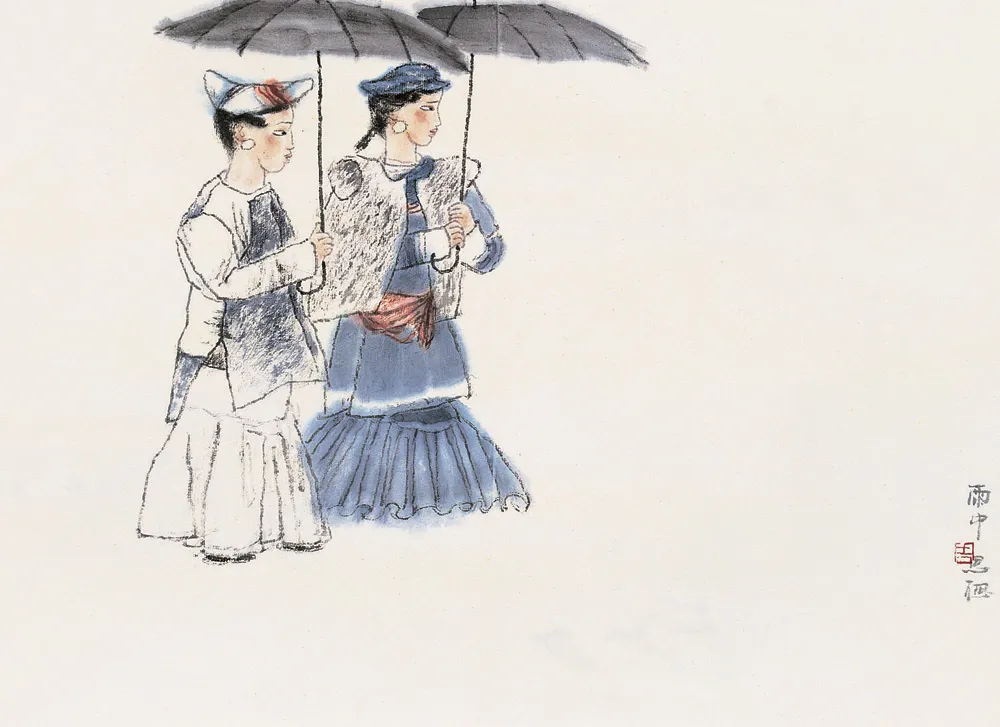
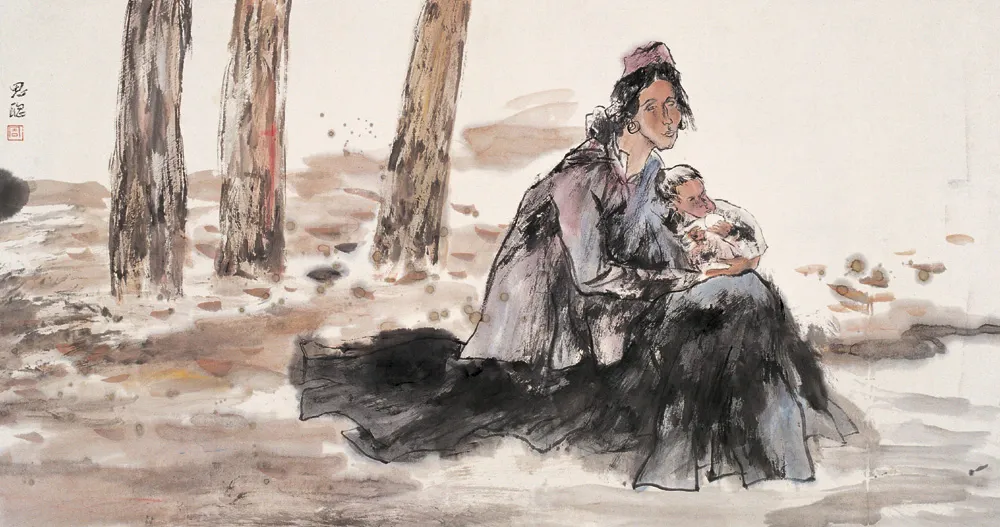
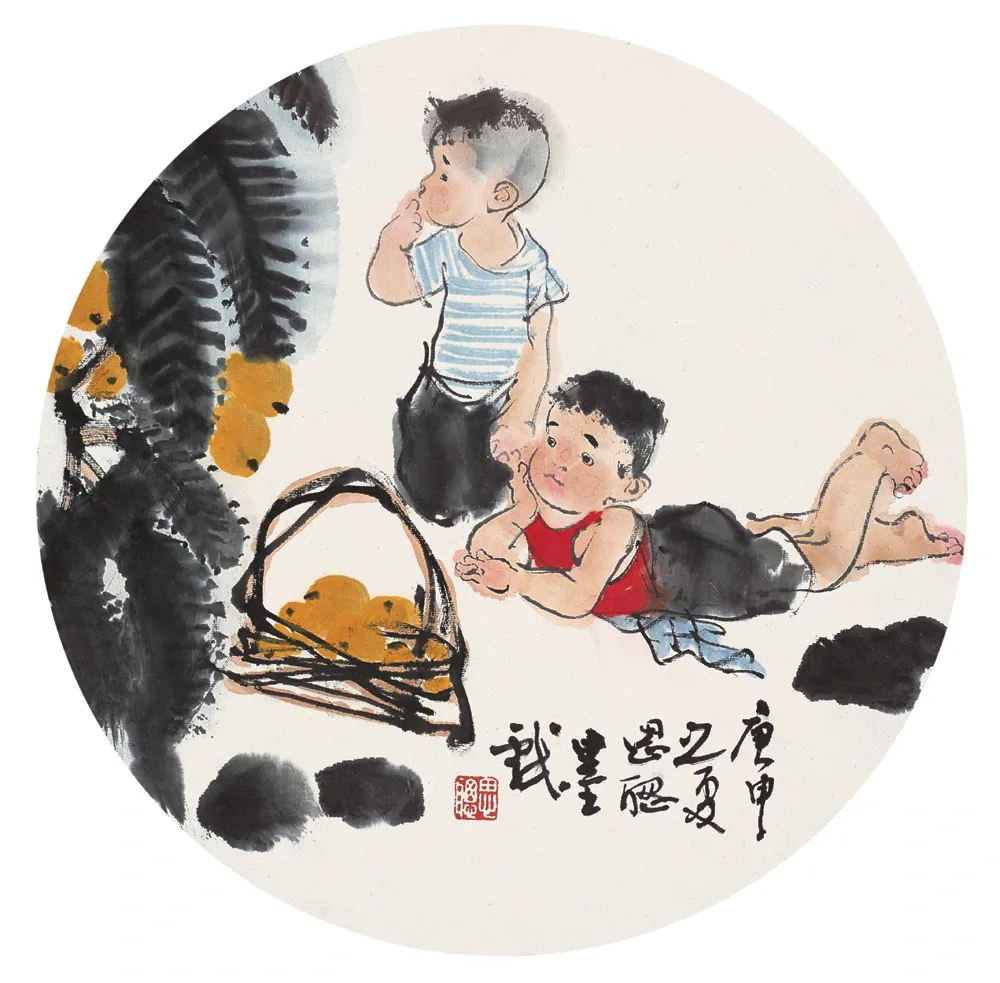

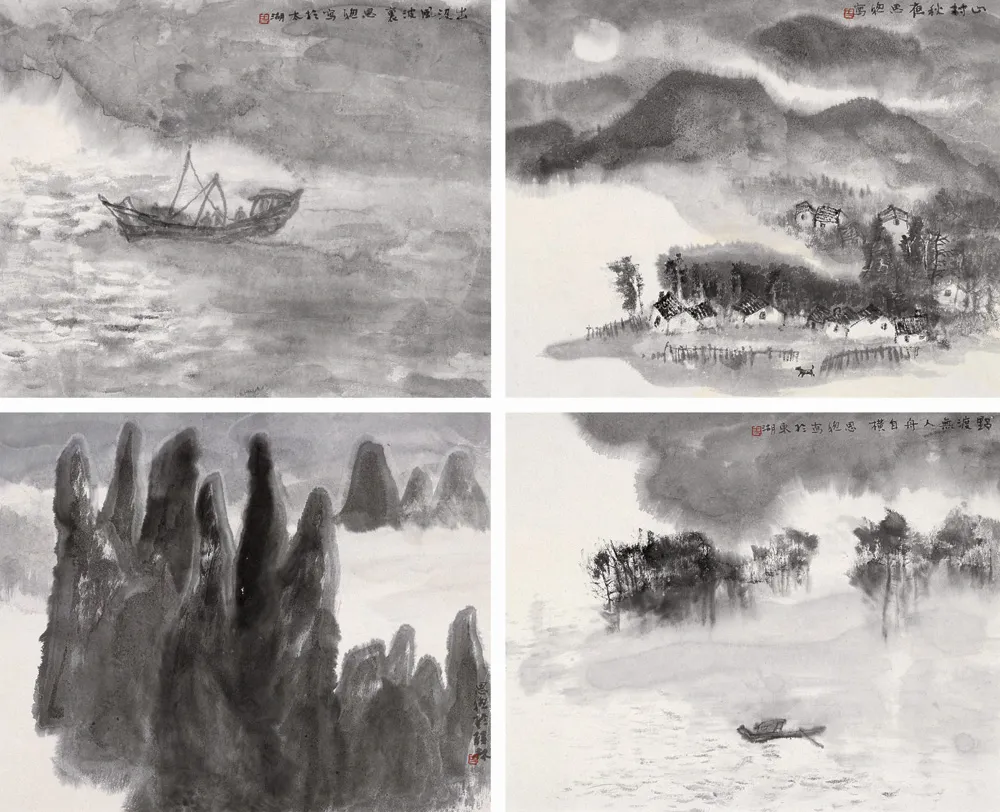
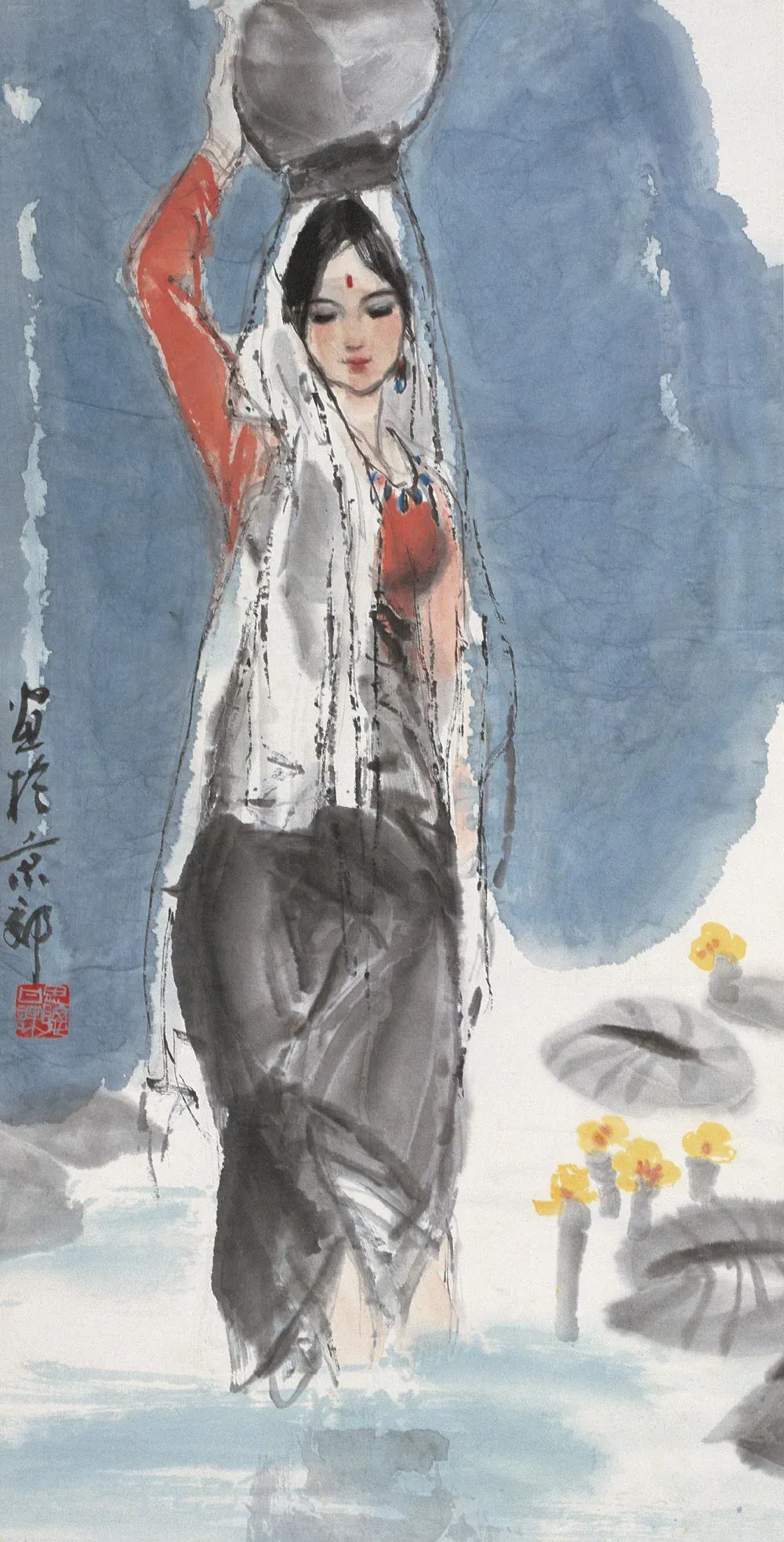



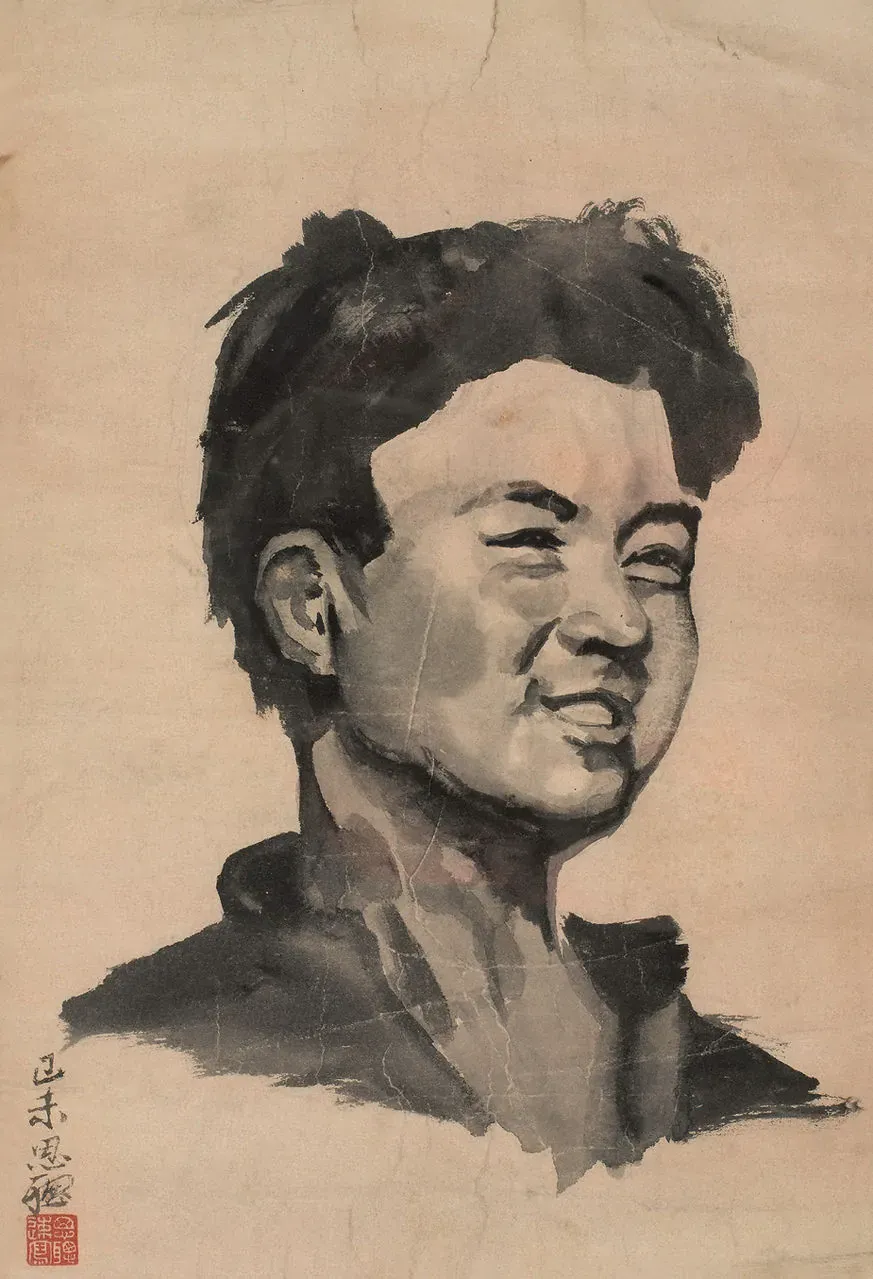
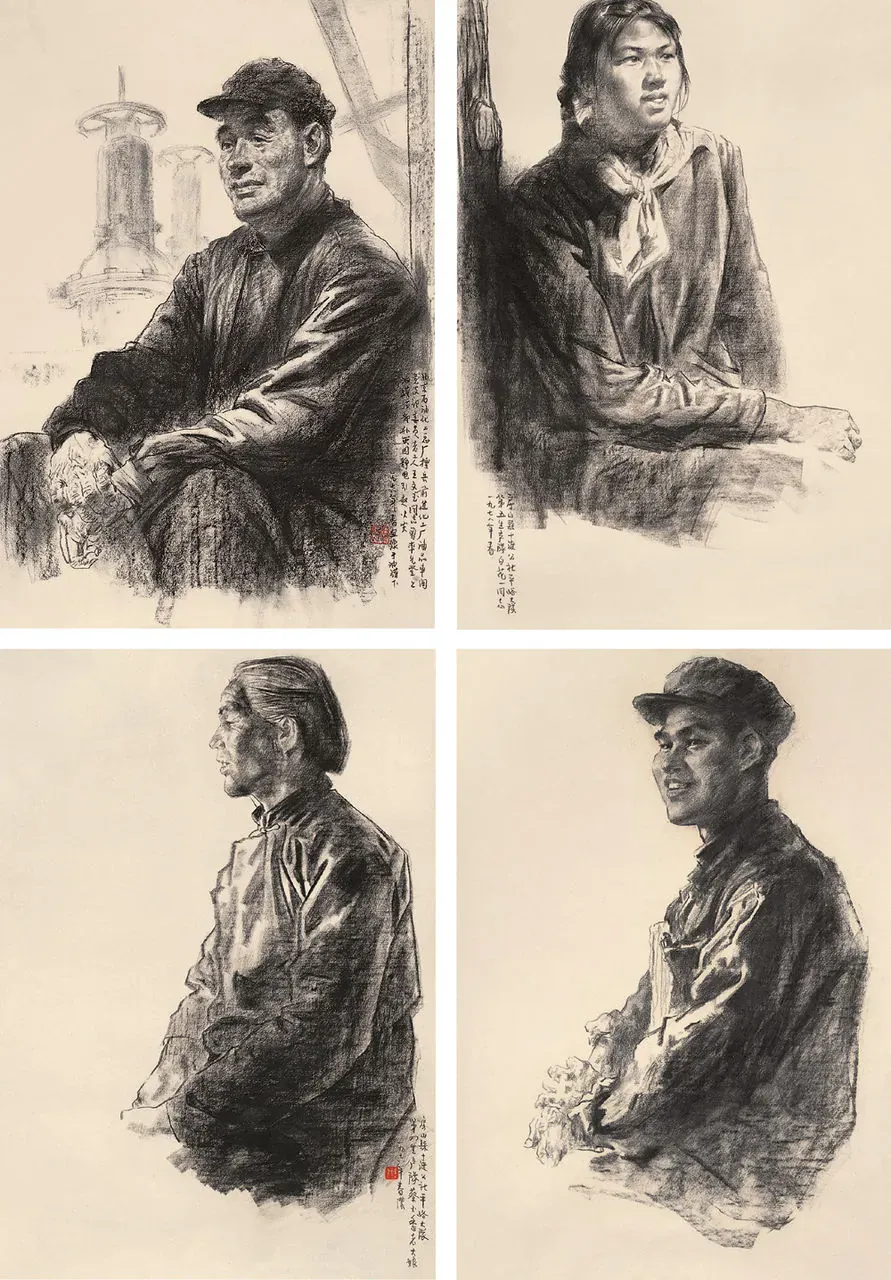
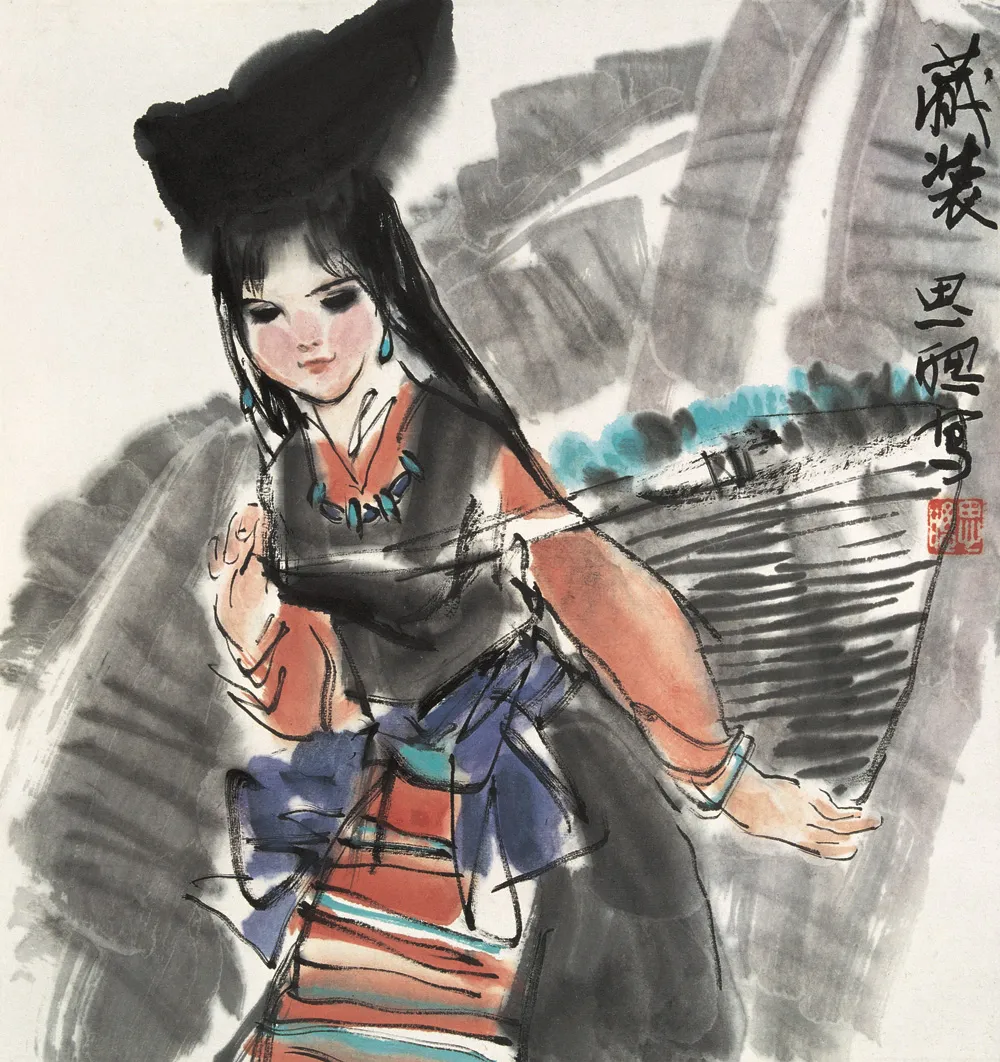
周思聪画理,贯于生活点滴。以四处皆生活为主张,唯细察可捕瞬美。每出采风,恒持最强烈之印象。即未能绘,亦以文字记瞬间感悟,以便重温诗趣。创作中,绘画须动己心弦,方动他人。凡无趣之作,不值耗时,宜另起炉灶。其求之效果,乃儿童画之纯真与强烈视觉。特定环境中人物动态与面貌,必铭心间,不留模糊印象。模糊记忆难传强感。农民画与儿童画,情感强烈,趣味天然,稚拙有致,不似专业画家之技艺表演。
Zhou Sicong's painting philosophy is rooted in the details of daily life. She believes that life is everywhere, and only through careful observation can one capture fleeting beauty. Every time she goes out to sketch, she strives to retain the strongest impression of the moment. Even if she cannot immediately paint, she records her impressions in words, allowing her to revisit the poetic and interesting aspects later. In her creation, she insists that painting must move her own heart to move others. Works that do not interest her are not worth the time and should be abandoned. The effect she seeks is the purity and strong visual impact of children's paintings. In specific environments, the movements and features of people must be deeply remembered, not left as vague impressions, for unclear memories fail to convey strong feelings. Farmers' paintings and children's drawings, full of strong emotions, natural charm, and naive simplicity, differ from the technical performances of professional painters.
周思聪重形式美感,强调对比手法与节奏安排相衬,助于人物特点显现。对比强烈,趣味方出,如儿童画中,方碗圆碗,相映成趣,引人入胜。此对比需画家主观处理,勿为对象所缚。皴擦手法亦为形式美感而存,线条若具美感,应保留之。周思聪常铭记,所画为画,非简单对象,唯如此,方不为物所牵。观人须重整体印象,如描老人,宜突脸部横线与松弛肌肉,使笔法契此感。
Zhou Sicong places great importance on the beauty of form, emphasizing the interplay of contrasting techniques and rhythmic arrangements to highlight the characteristics of her subjects. Strong contrasts bring out interest, much like in children's paintings, where a square bowl and a round bowl form a striking contrast that captivates the viewer. This contrast requires the artist's subjective treatment to avoid being constrained by the object. The technique of rubbing and scratching also serves the beauty of form; if the lines themselves possess beauty, they should be preserved. Zhou Sicong always remembers that she is painting a picture, not merely depicting an object, to avoid being restricted by it. When observing people, she focuses on the overall impression. For instance, when depicting an elderly person, she highlights the horizontal lines of the face and the loose muscles to make her brushwork fit this feeling.
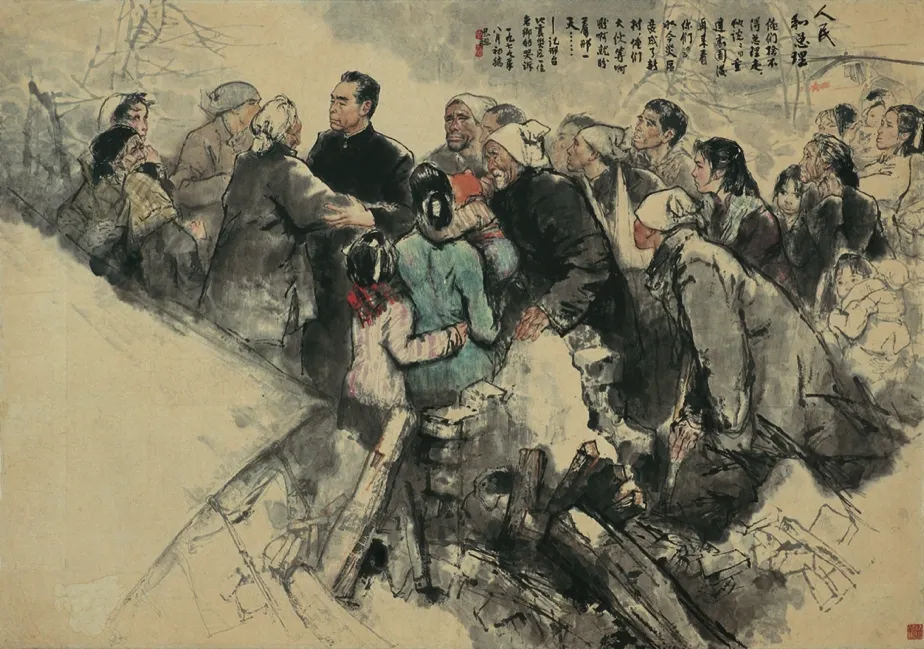
《人民和总理》乃新时期画家周思聪之杰作。画述丙午年邢台地震,总理周恩来首赴灾区,与民共抗,鼓舞众心。画面截取百姓拥总理一瞬,凝激动肃穆之情。虚实对比强烈,倒金字塔三角构图,动感中见庄重平实。既现人群涌动之悲痛期盼,亦显总理心系民众之深情。此作破文革“三突出”“高大全”之格,领袖与民并列,神情生动,笔墨酣畅,艺术力卓。此画乃中国现代人物画史中里程碑,获第五届全国美展一等奖。
"The People and the Premier" is a masterpiece by contemporary painter Zhou Sicong. The painting depicts the Dingwu year (1966) Xingtai earthquake, where Premier Zhou Enlai first arrived at the disaster area to stand with the people and boost their morale. The scene captures the moment when the citizens flocked to the Premier, encapsulating the emotions of excitement and solemnity. The strong contrast of light and shadow and the inverted pyramid triangular composition create a sense of motion within the solemn and simple setting. It not only reflects the heaviness, pain, and anticipation of the crowd but also highlights the Premier's deep compassion for the people. This work breaks the "three prominences" and "high, great, complete" patterns of the Cultural Revolution, placing the leader among the people, with vivid expressions and fluent brushstrokes, exhibiting exceptional artistic power. This painting is a milestone in the history of modern Chinese figure painting, winning the first prize at the Fifth National Art Exhibition.
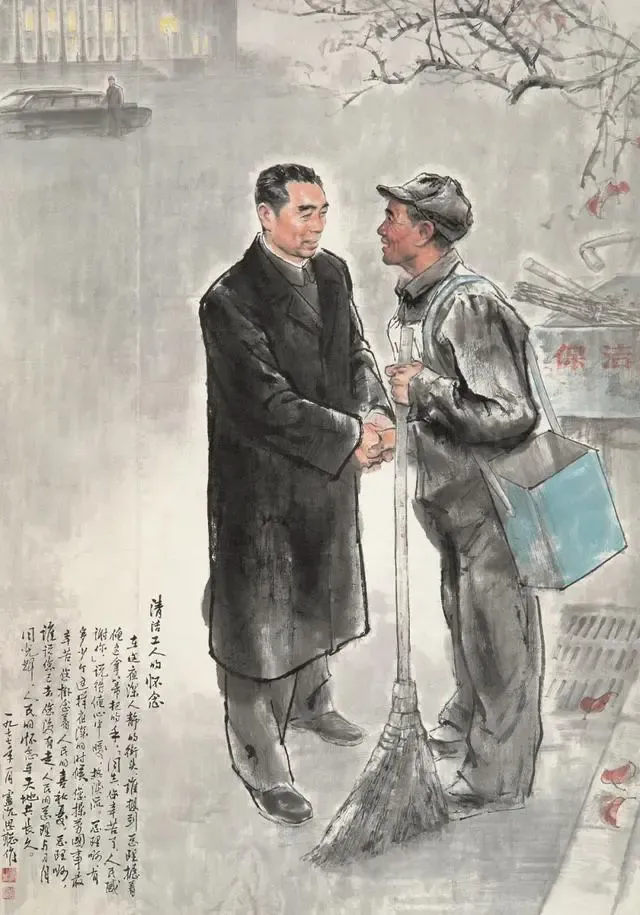
《清洁工人的怀念》乃画家卢沉、周思聪夫妇于周恩来逝世一周年时所作,藏于中国美术馆。晨曦初露,周恩来披黑衣现街头,与清洁工亲握手。地上黄叶,枝头枯叶,示深秋初冬,若非此时,周公不披大衣。画中,周公亲和,面带慈笑,双手握清洁工之手,工人感动、惊喜、幸福之情尽显。工人手握扫帚,背负垃圾筒,正值工作,不知总理来访,神态微凑,疑幻疑真。尤值一提,周公外出轻车简从,反对前呼后拥。生前随员忆述,总理出行不让警车开道,仅后随一车。画中,周公身后远处有车,车旁人影模糊,或警卫或司机,不随总理近工人。论安全,警卫似失职,然不违首长意愿。此情生动,反映“人民总理爱人民,人民总理人民爱”之深情,亦中华民族对周公永恒心声。
"The Janitor's Remembrance" is a painting by the artists Lu Chen and Zhou Sicong, created on the first anniversary of Zhou Enlai's death, now housed in the National Art Museum of China. At dawn, Zhou Enlai, clad in a black coat, appears on the street, warmly shaking hands with a janitor. The yellow leaves on the ground and the withered leaves on the branches indicate late autumn or early winter, as Zhou would not wear a coat otherwise. In the painting, Zhou is affable, smiling kindly, and holding the janitor's hands with both of his, while the janitor's emotions of gratitude, surprise, and happiness are vividly depicted. The janitor, holding a broom and carrying a garbage can, is in the midst of his work, unaware of the Premier's visit, and his slightly leaning posture reflects his disbelief. Notably, Zhou insisted on minimal entourage during outings, opposing any ostentation. His aides recalled that during his travels, there were no police escorts ahead, only a single car following behind. In the painting, a car is seen in the distance behind Zhou, with indistinct figures beside it, either guards or the driver, not accompanying Zhou closely. From a security perspective, the guards might seem negligent, but they adhered to the Premier's wishes. This scene vividly portrays the deep affection between the "People's Premier" and the people, echoing the eternal sentiment of the Chinese nation for Zhou Enlai.
周思聪创作,讲究线条意味,线无味则毛笔无用。喜兢兢毛涩线条,忌轻率笔锋。用笔宜慢,便控形之夸张。态度严肃,每笔皆负责任。创作之要,捕捉生活深意,表现美好高趣。力排外人影响,专注自我感受。对其而言,最珍贵者,乃己感受。画作应能引人神游,勿为情趣而造作,当自然流露生活趣味。
周思聪谓,装饰变形须朴实自然,忌太外露。生活感受,宜以己言表,不仿他人之作。唯真实感受,方能动人。
In her creation, Zhou Sicong values the flavor of lines, believing that lines without flavor do not justify the use of a brush. She favors meticulously rough lines over hasty ones. She advocates a slow approach to brushwork to control exaggerated forms. Her attitude is serious, and every stroke must be responsible. The key to creation is capturing the depth of life and expressing beauty and high sentiment. She strives to eliminate external influences and focuses on expressing her own feelings. For her, the most precious thing is her own experience. A painting should allow the viewer to wander in their mind, but it should not be artificially crafted for charm; it must naturally flow from the joys of life.
Zhou Sicong believes that decoration and deformation should be simple and natural, not overly conspicuous. Life's experiences should be expressed in one's own words, not by imitating others' works. Only true feelings can create moving works.
然盛年之际,周思聪终为疾患夺走无穷创造力。丙子岁,长辞世间,享年五十七。其宁静淡泊之品,冰雪聪慧之资,继往开来之智,永凝作品,驻于心间。其爱自然爱凡人之胸襟,焕发永恒光彩。
时有方家云,周思聪为新中国女画家中德艺双馨之代表,亦本世纪后期中生代最优者之一。
In her prime, Zhou Sicong ultimately succumbed to illness, which took away her boundless creativity. In the year of Bingzi, she departed from this world at the age of fifty-seven. Her serene and modest character, brilliant intellect, and pioneering wisdom are eternally preserved in her works and remain in the hearts of many. Her love for nature and ordinary people shines with everlasting brilliance.
At that time, experts commented that Zhou Sicong was not only a model of virtue and artistry among female painters in New China but also one of the most outstanding painters of the mid-generation in the latter half of this century.
责任编辑:苗君